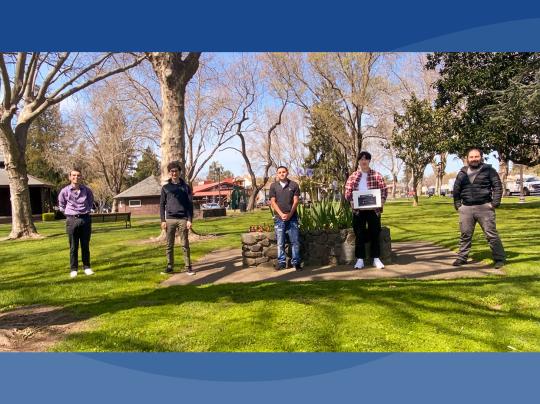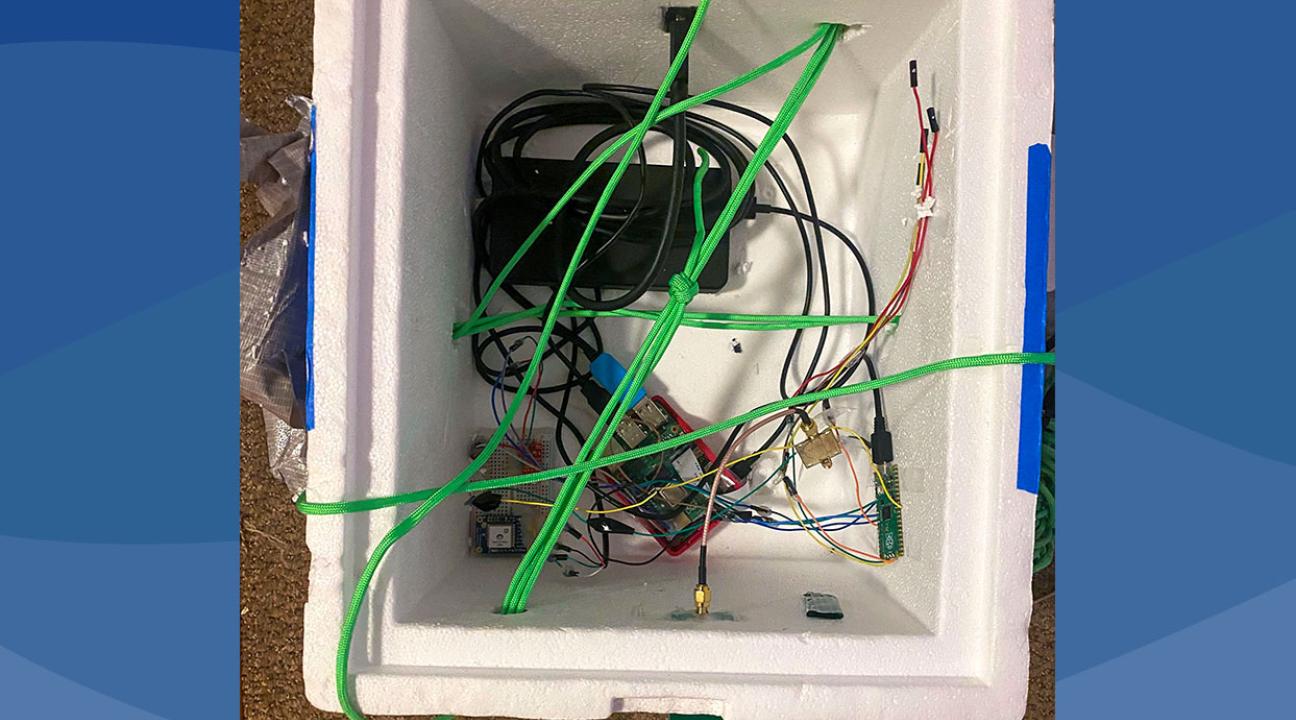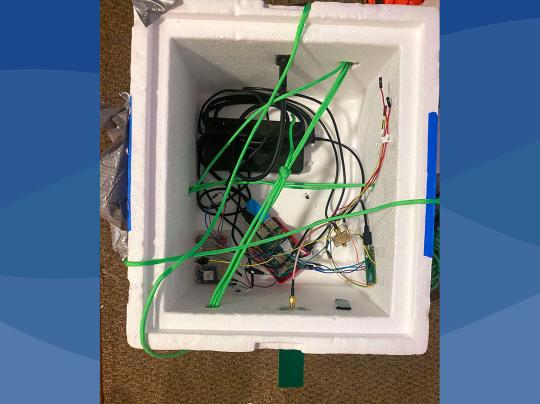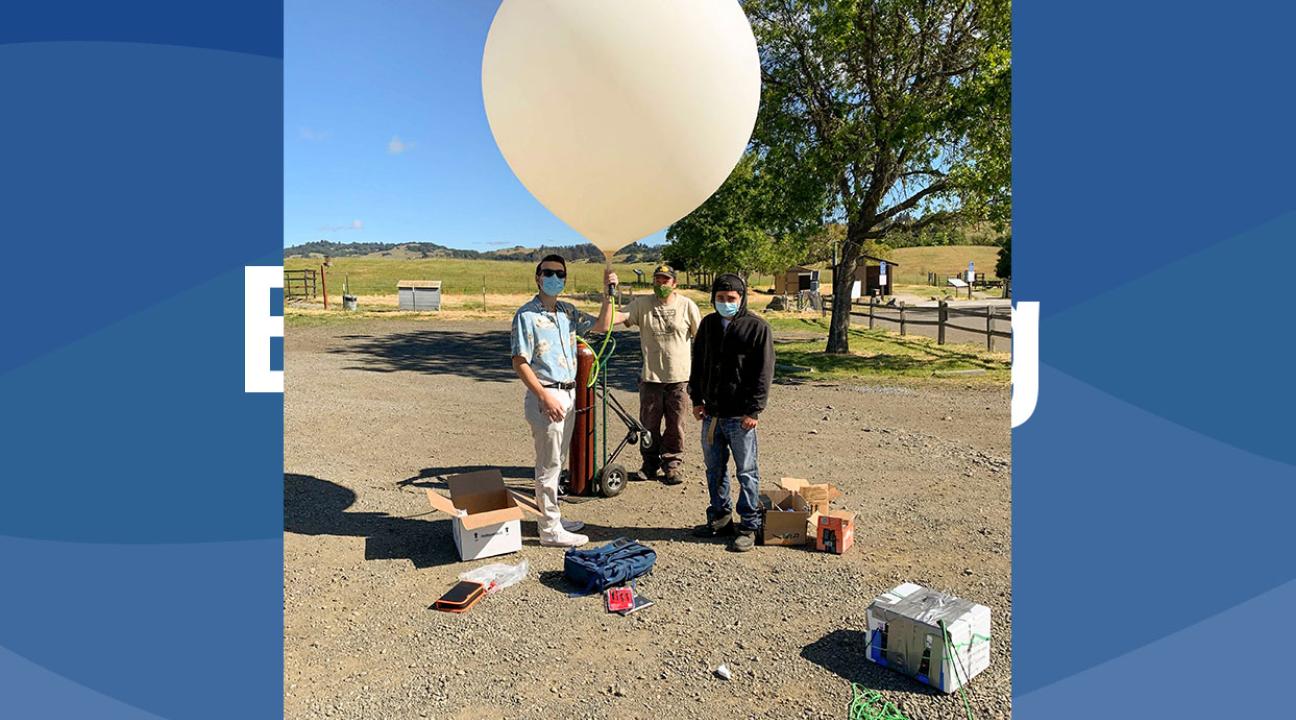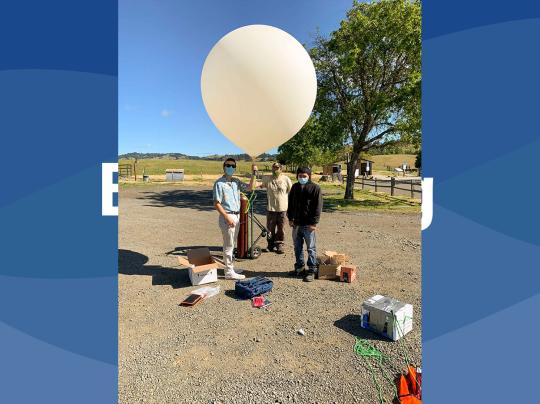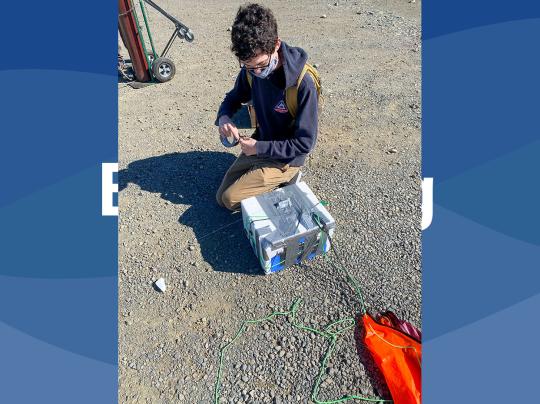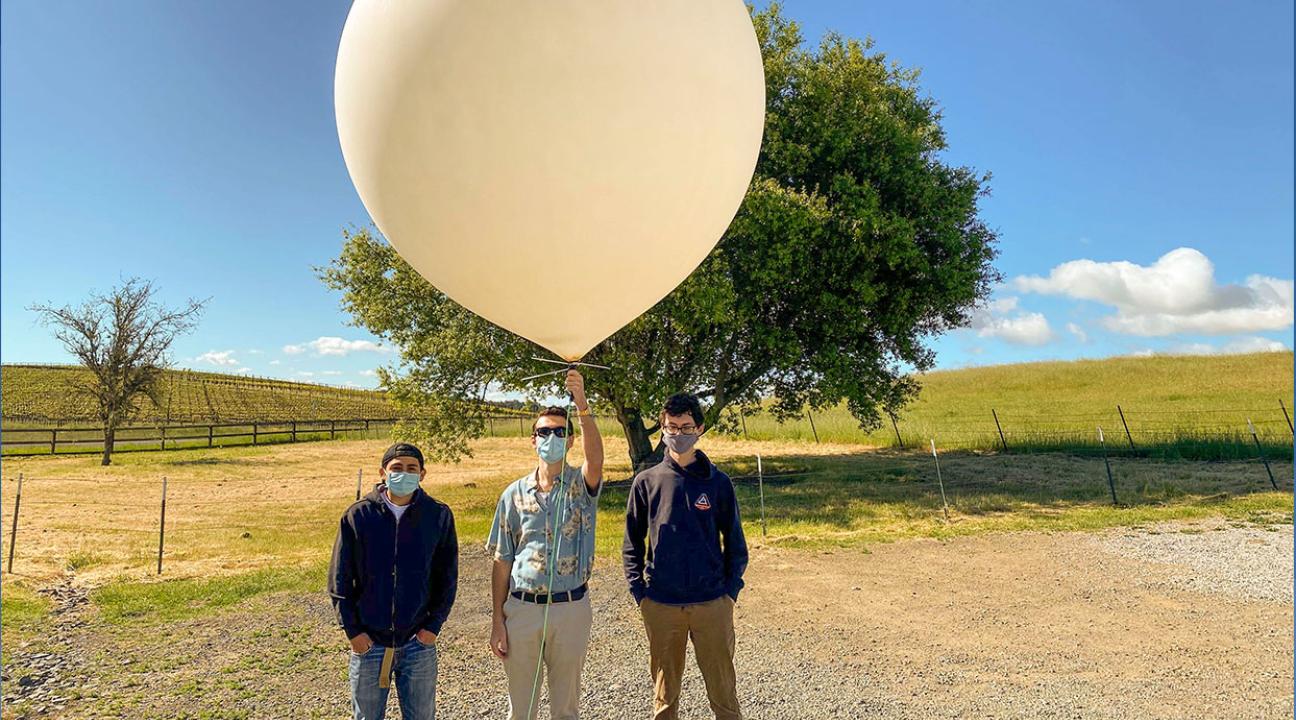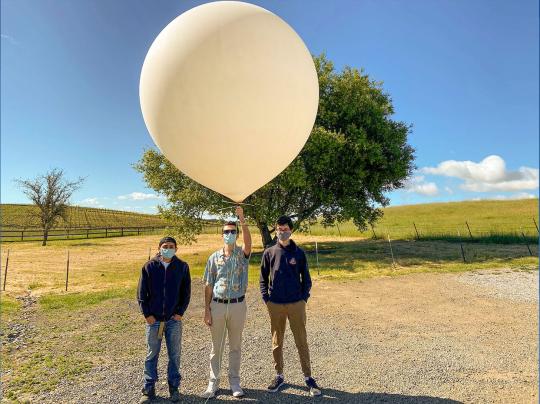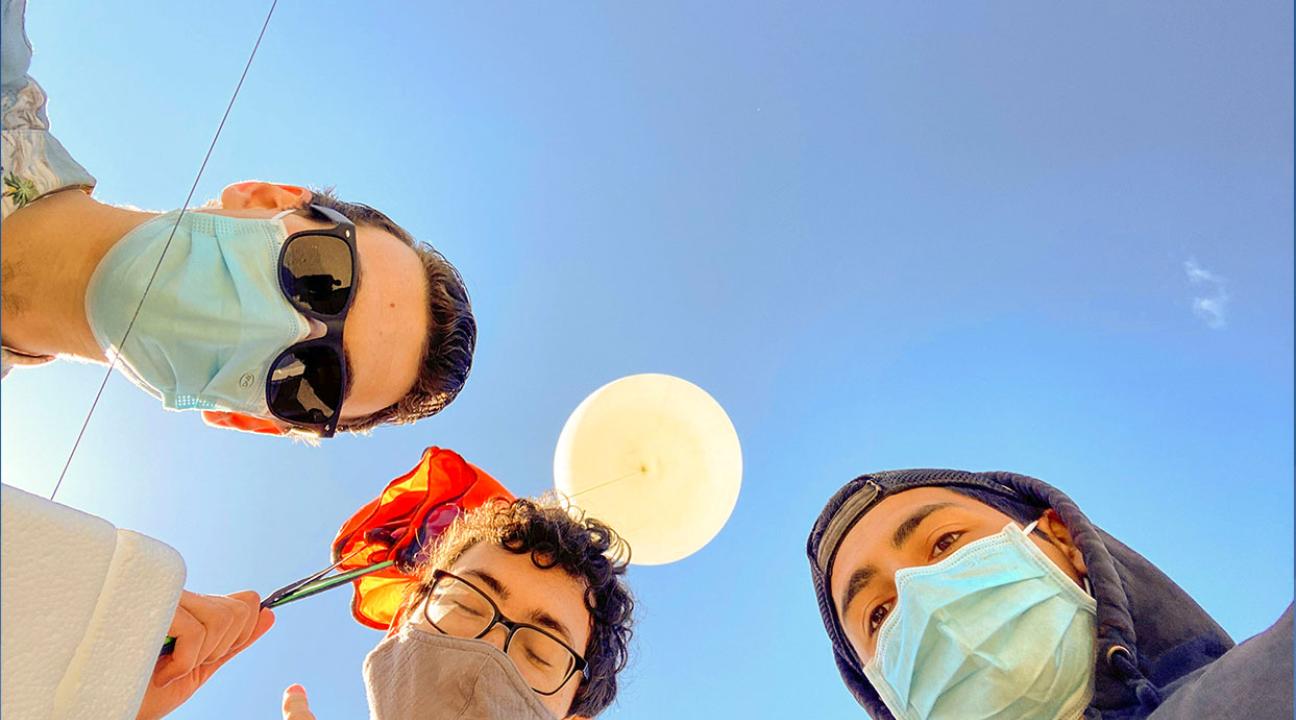Engineering Students Successfully Launch a High-Altitude Weather Balloon Experiment
A team of engineering students successfully launched a high-altitude weather balloon to measure very low frequency (VLF) electromagnetic radiation in the stratosphere. The project is a pioneering research work in the area of tracking natural and man-made VLF RF radiation in the upper atmosphere and was funded by a Koret foundation award and supported by the Electrodynamics Engineering Laboratory (eel). The team, consisting of junior students Andres Rivera, Nathan Candler, and Tony Jang, was supported by alumni David Story, and mentored by Dr. Mohamed Salem. The team successfully launched the balloon from Crane Creek Park, which ascended to about 100,000 feet, then dropped its payload after about two and a half hours in a farm in Stockton, CA.
Despite all the challenges posed by the pandemic and having to work remotely, the students did an excellent job planning and executing the project. The team faced some technical difficulties in communicating with the balloon after the launch, which resulted in loss of some of the collected data. Nevertheless, the team had a very valuable learning experience, and the students are very excited to go for a second launch after improving the electronics and sensors. The team would like to acknowledge the funds they received from the Koret foundation and made this project happen. The team is also grateful for all the support they received from the Engineering Department, the Office of Research and Sponsored Programs (OSRP), the School of Science and Technology, Mr. Ryan Grumich from the Chemistry Department for his help with the helium logistics, and Mr. Michael from Klein Family Farms in Stockton, CA for contacting the team and giving them access to the farm to retrieve the payload.



